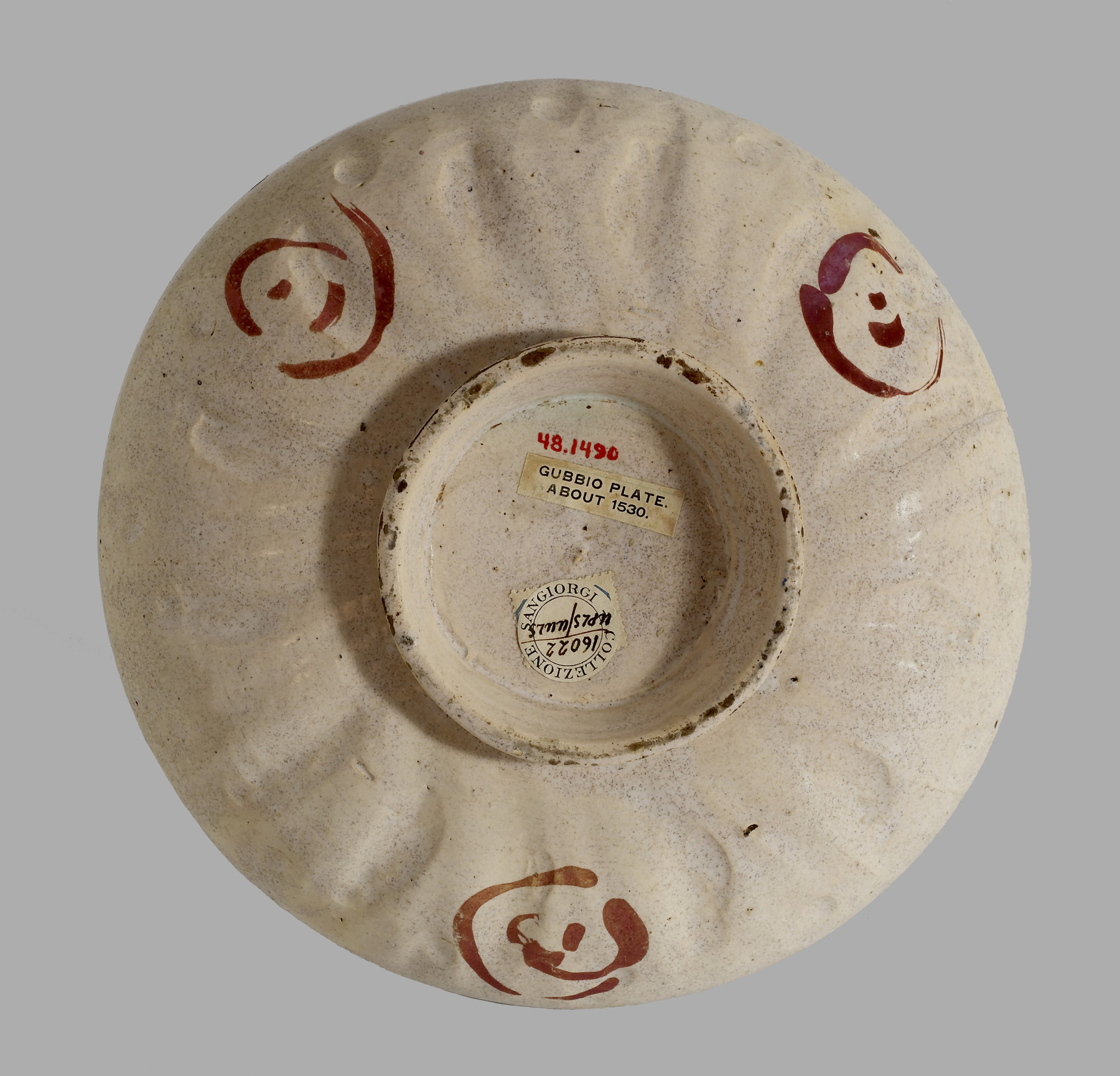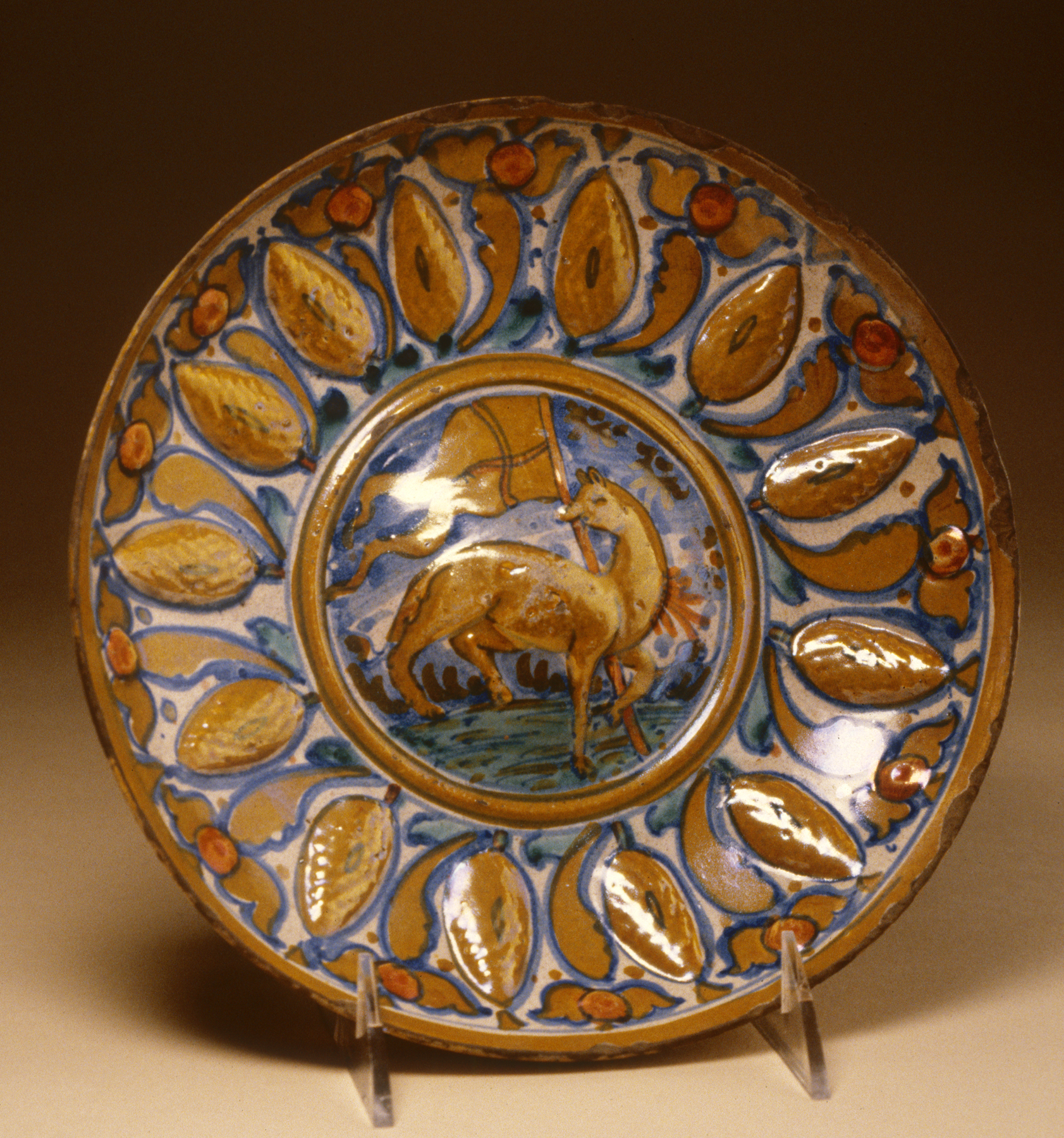Dish with the Lamb of God
(Renaissance Europe )
The Lamb of God at the center of this dish was a common symbol for Christ during the Renaissance period, referencing the words of John the Baptist (in John 1:29) who was preaching when he saw Christ coming towards him and declared, “Here is the Lamb of God who takes away the sin of the world” evoking Christ’s intention to offer himself to God as an altar offering to atone for the sins of mankind. The outer ring exhibits a pattern of gold leaves, with simple orange and gold blossoms in between. The back of the dish is decorated with three spirals in ruby luster. The ruby-tone luster glaze applied to this dish was a specialty of the Gubbio workshops. In particular, Giorgio Andreoli’s workshop became famous for its lusterware during the sixteenth century. For more information on Giorgio Andreoli and his workshop, see Walters 48.1331. To look at other works by the artist and his workshop, click on his name in the “creator” field. To view other maiolica dishes including the Lamb of God motif, see Walters 48.1356 and 48.1353; for “maiolica” in general, see Walters 48.1336.
Provenance
Provenance (from the French provenir, 'to come from/forth') is the chronology of the ownership, custody, or location of a historical object. Learn more about provenance at the Walters.
Sangiorgi, Rome [date and mode of acquisition unknown] [no. 161]; Henry Walters, Baltimore [date of acquisition unknown], by purchase; Walters Art Museum, 1931, by bequest.
Geographies
Italy, Umbria, Gubbio (Place of Origin)
Measurements
2 1/16 x 8 11/16 in. (5.2 x 22 cm)
Credit Line
Acquired by Henry Walters
Location in Museum
Accession Number
In libraries, galleries, museums, and archives, an accession number is a unique identifier assigned to each object in the collection.
In libraries, galleries, museums, and archives, an accession number is a unique identifier assigned to each object in the collection.
48.1490






